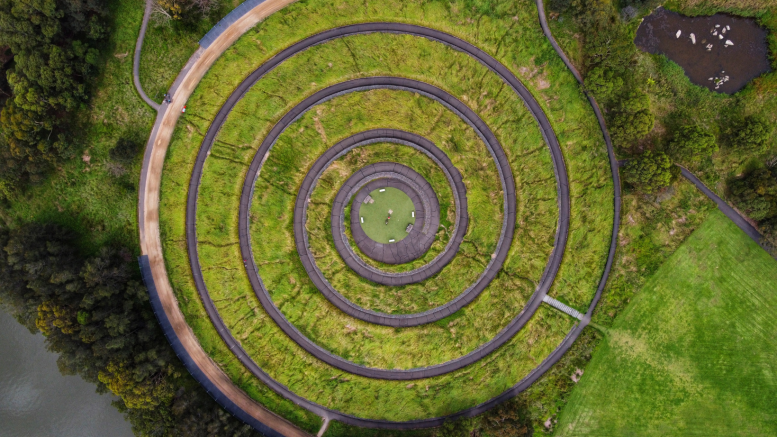What if plastic didn’t last 400 years?
What if bottles, wrappers, utensils, packaging, and foams didn’t turn into microplastics
floating through rivers, oceans, soil, and even our bodies…
…but simply returned to nature?
Or better yet — what if plastics could be recycled infinitely without losing quality,
closing the loop the way ecosystems do?
Today on Mobilized News, we’re flipping the script on plastic —
from a global pollution crisis to a future built on bioplastics and circular polymers
that disappear safely or loop endlessly.
The Problem: Petro-Plastics Are Designed for Permanence
Traditional plastics are made from oil and built to last —
forever.
That design leaves us with:
- 400 million tons of plastic waste every year
- Microplastics in the ocean, air, food, blood, and placenta
- Landfills overflowing with single-use packaging
- A fossil-fuel industry tied to plastic demand
- No safe way for materials to break down
- Recycling systems that fail 90% of the time
- Toxins leaking into communities
Plastic pollution isn’t accidental.
It’s a design flaw.
But circular polymers rewrite the design.
The Flip — Plastics with an Expiration Date
Circular polymers are plastics that:
- Come from renewable feedstocks (plants, algae, agricultural waste)
- Break down naturally without toxins
- Or can be recycled infinitely at molecular scale
- Require fewer fossil fuels
- Return nutrients to soil
- Reduce microplastic pollution
The goal is simple:
If it’s single-use, it should be safe to disappear.
If it’s durable, it should be infinitely circular.
Let’s see this in action.
Real Examples — Bioplastics & Circular Polymers Worldwide
Example 1: PLA & PHA Bioplastics — U.S., Japan, Italy
PLA (corn/sugar-based) and PHA (bacteria-derived) are used for:
- Compostable cups
- Plates
- Packaging
- Food containers
PHA is marine-biodegradable — it breaks down in water without harming ecosystems.
Example 2: Seaweed-Based Films — Indonesia, UK, Chile
Companies like Notpla, Evoware, and Sway produce:
- Edible sachets
- Compostable food wraps
- Zero-plastic takeout boxes
Made from kelp — a plant that restores marine ecosystems while it grows.
Example 3: Mycelium Foams — U.S., Netherlands
Mushroom-root materials replace:
- Styrofoam packaging
- Foam inserts
- Insulation
Fully compostable. Grown in days. No toxins.
♻️ Example 4: Carbios Enzymatic Recycling — France
Carbios uses engineered enzymes to break plastic down at the molecular level.
- PET bottles broken back into monomers
- Re-polymerized into virgin-quality plastic
- Infinite recycling loop
Chemical recycling done right — clean and circular.
Example 5: Eastman & Loop Industries — U.S. & Canada
These companies use advanced depolymerization to turn:
- Polyester clothing
- PET packaging
- Carpet fibers
…back into raw material for brand-new products.
Circular textiles. Circular packaging. Closed loops.
Example 6: Agri-Waste Bioplastics — India & Southeast Asia
Farmers convert crop waste like:
- Rice husk
- Bagasse
- Banana fiber
…into biodegradable cups, plates, containers, and films.
Turning agricultural waste into a circular industry.
Example 7: Refillable, Concentrated & Solid Formats — Global
Some plastics need to go away entirely.
Refill systems replace plastic bottles with:
- Solid shampoo bars
- Concentrated cleaners
- Reusable aluminum or glass containers
Fewer plastics. Smarter systems.
Why Circular Plastics Matter
Microplastic Prevention
Materials designed to break down =
less pollution in oceans, soil, animals, and our bodies.
♻️ Real Recycling
Polymers made for circularity can be:
- Repaired
- Remade
- Decomposed
- Re-polymerized
No downcycling. No landfill.
Lower Toxicity
Biobased materials avoid:
- PFAS
- BPA
- Phthalates
- Petroleum additives
Safer for people and ecosystems.
Local Circular Economies
Bioplastics and circular polymers create new industries:
- Seaweed farms
- Mycelium labs
- Local bioplastic facilities
- Upcycling hubs
- Material recovery cooperatives
Jobs shift from extraction → regeneration.
What Communities Can Do Now
1. Support public procurement of bioplastics.
Schools, hospitals, and city agencies can switch today.
2. Launch refill + reuse systems for durable goods.
Plastic reduction begins with smart design.
3. Advocate for composting and bioplastic-ready waste streams.
Infrastructure determines success.
4. Create biomaterials labs in community colleges and makerspaces.
Train the next generation of circular designers.
5. Encourage local businesses to adopt compostable or circular packaging.
Co-ops, cafes, and markets can lead the shift.
6. Push for bans on toxic petroplastics paired with local alternatives.
Policy + innovation = progress.
The Big Shift
We don’t need “better plastic.”
We need plastic designed for life.
Plastics with:
- Purpose
- Traceability
- Circularity
- Safe endings
- Regenerative beginnings
Bioplastics grow from nature.
Circular polymers return to nature.
Both eliminate the “forever” problem petro-plastics created.
Because the future doesn’t belong to materials that last forever —
it belongs to materials that last just as long as we need them to.
That’s how we flip the script —
from plastic pollution
to regenerative, circular materials that make waste extinct.
